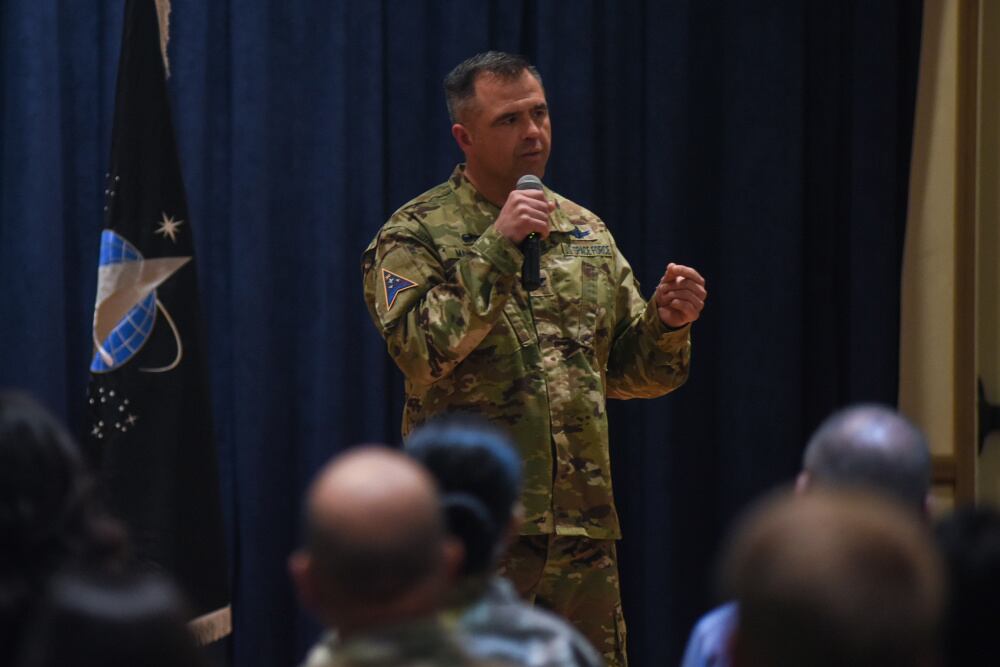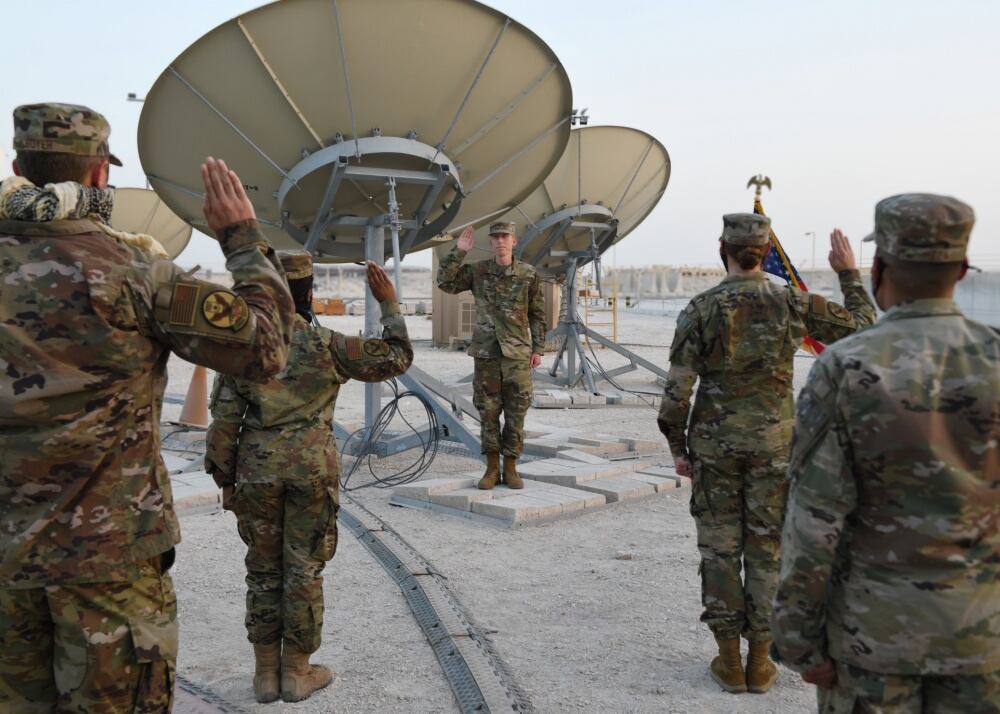Space Force leaders are hashing out a plan to create a new group under U.S. Central Command to coordinate what military space assets to use in the region, complementary to the Air Force’s own ops organization in the Middle East.
Service components in each region respond to combatant commanders’ requests for forces to handle daily missions. The fledgling reorganization aims to directly involve the Space Force in those discussions and ultimately lead to more robust space ops.
That unit, tentatively known as Space Forces Central Command, could also serve as a blueprint for creating sister groups around the globe — for example, Pacific Space Forces, U.S. Space Forces in Europe and Space Forces Africa, Space Forces Northern in North America, and Space Forces Southern in Latin America and the Caribbean.
Lt. Gen. Chance Saltzman, the Space Force’s operations boss in the Pentagon, is leading the planning effort from Washington. Col. Anthony Mastalir, who left Vandenberg Space Force Base, California, for Al Udeid Air Base in Qatar earlier this summer, is helping roll out Saltzman’s vision on the ground in the Middle East.
“If you think that the Space Force service component is … stripping out capability from the air component, I will tell you, that’s not my thought process,” Saltzman said at an Aug. 11 event hosted by the Air Force Association. “It’s to add focus, it’s to add a subordinate commander that, that combatant commander can point to and say, ‘This is your responsibility.’”
Previously, that job fell to an airman serving as the director of space forces in Air Forces Central Command. The Air Force has managed space assets through the Combined Air Operations Center, a mission-planning and data hub located at Al Udeid.
“Let’s say CENTCOM is planning or in the middle of an operation somewhere in the Middle East, and they realize they’re going to need certain [satellite communications] coverage. You go to SPACECENT to request the SATCOM coverage that you need,” said Todd Harrison, director of the Aerospace Security Project at the Center for Strategic and International Studies.
“Maybe they’re experiencing … GPS jamming,” he added. “You go to the Space Force to report that and ask the Space Force to, in the case of M-code [anti-jamming software], bump up the power of the signal in the region.”
In the future, commanders may also turn to the Space Force for battlefield intelligence, surveillance and reconnaissance data collected by satellites.
The reorganization shouldn’t require any additional people except for perhaps assigning a commander and a deputy commander to SPACECENT, Harrison said. Neither should it call for much more infrastructure than what AFCENT already provides.
Saltzman, a former AFCENT deputy commander, echoed that, saying he intends to keep air and space operations closely linked, noting that the Space Force still relies on Air Force facilities to avoid duplicating cost and effort.

The Space Force can follow the model set by the Marine Corps, which manages troops in the Middle East through its Marine Corps Forces Central Command. Keeping the Air Force in charge of authorizing space combat assets would be akin to the Navy controlling the same decisions for the Marines.
“As an independent service, Space Force should have [administrative control] over their personnel in theater, much like the Marine Corps has … over theater Marines,” said Bruce McClintock, a retired Air Force brigadier general who leads space-related research at the federally funded think tank Rand Corp.
Those experts foresee overlap and possible tension between the Space Force and U.S. Space Command, which directs the personnel and wields the assets of the space service in daily operations.
The service already has a branch that reports to SPACECOM — the similarly named Space Operations Command. Most Space Force units will work for SPACECOM through that subordinate branch, McClintock said.
“Space Force and SPACECOM will need to find a way to have these two entities work together in each theater,” he said. “Given the very close alignment between the service and the [combatant command], this seems possible.”
Wargaming and exercises could help the two figure out how to direct forces via their unique lanes, he suggested.
The Space Force will likewise be challenged to assign guardians to the various combatant commands who can understand their combat mindset and work together efficiently and effectively, Harrison said.
“In the past, [combatant commands] could rely on the Air Force, some fighter pilots to serve as that interface,” Harrison said. “Now, they’re on their own, and they’ve got to have their own Space Force personnel who can function in these important roles.”
He envisions an even larger issue could arise down the road: Creating Space Forces Central Command and other similar organizations may raise questions about how valuable the regional commands they serve are.
“If the Space Force owns the resources — the people, the platforms, the units — and the Space Force is, by necessity, developing these components within each of the geographic commands, and if all the geographic commands are funneling their requests for resources back through these components into the Space Force, what is Space Command doing?” he said.
It’s a sign that the combatant command model is “near the end of its useful life,” Harrison said. Instead, he suggested, adversary- or threat-based commands could pop up and close down as the global security environment evolves.
“Maybe we end up with just a bunch of functional commands [like U.S. Strategic Command and U.S. Transportation Command] and some ad hoc crisis commands, if you will,” he said. That could entail separate commands focused on Russia and China, or on Afghanistan if the United States boosts its involvement there, among others.
“We’re entering an era with cyber and space and countries like China and Russia with global reach and ambition,” Harrison said. “The COCOM model is ripe for rethinking.”
Rachel Cohen is the editor of Air Force Times. She joined the publication as its senior reporter in March 2021. Her work has appeared in the Washington Post, the Frederick News-Post (Md.), Air and Space Forces Magazine, Inside Defense, Inside Health Policy and elsewhere.





